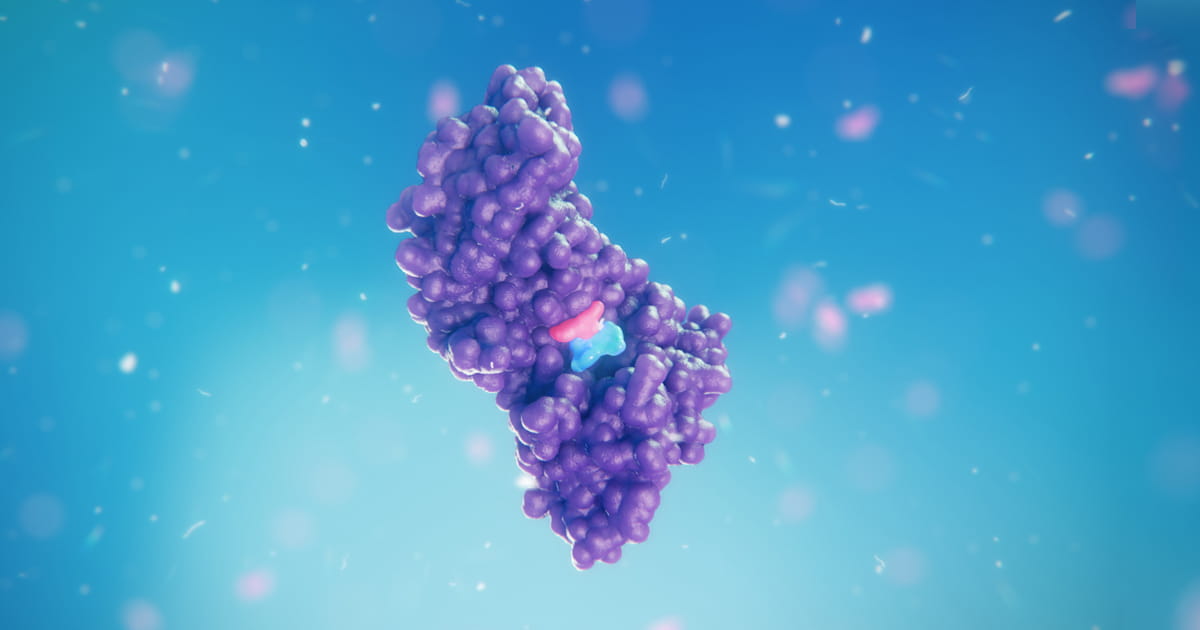Summary:
- Scientists at Amgen are creating a new class of molecules designed to stabilize natural interactions in the body, offering a novel approach to treating diseases.
- LOCKTAC glues can precisely target disease processes by stabilizing existing cellular interactions, potentially reaching previously “undruggable” targets and minimizing side effects.
- AMG 193, a clinical-stage LOCKTAC molecule, is designed to inhibit the enzyme PRMT5 in certain cancer cells.
For decades, most medicines have worked the same way – by blocking something. They inhibit enzymes, shut down receptors or keep proteins from binding to one another. This approach has delivered many important therapies, but it’s not always enough. Biology isn’t just a series of simple on/off switches. Inside our cells, many vital processes rely on fast, fleeting interactions between molecules that assemble just long enough to do their job and then move on. Traditional drugs often can’t effectively target such transient interactions, and some disease drivers (like certain transcription factors that help control genes) lack a convenient place for a drug to bind.
“At Amgen, we asked: what if we could intervene in those interactions differently?” said Ryan Potts, head of Amgen’s Induced-Proximity Platform that leverages the body’s natural mechanisms to target disease-causing molecules. “Instead of blocking a process, could we stabilize the interactions that make it work, or in some cases, lock them in a non-functional state to stop disease?”
That question led Amgen’s discovery research team to investigate a new class of therapeutic candidates they named LOCKTACs. These molecules are designed to act as a type of molecular glue that “locks” two naturally interacting molecules and holds them in place for longer than they would bind on their own.
The impact depends on the biology. In some cases, a LOCKTAC might enhance a beneficial interaction, making it more effective. In others, it might trap a harmful interaction in a way that shuts down a disease process. Either way, the goal is to work within the body’s natural biology, not against it.
LOCKTACs fall within the broader category of induced proximity therapeutics, molecules that act by bringing proteins into close contact. Unlike proteolysis-targeting chimeras (PROTACs) – another induced proximity molecule that recruits a third component to degrade a protein – LOCKTACs stabilize targets by holding two molecules together to influence their interactions and function. This sets LOCKTACs apart as a unique way to modulate biological processes.
Turning a Bold Idea into Real Science
This isn’t just a theory. Amgen is already testing LOCKTACs in early-stage clinical trials. One example is AMG 193, an investigational medicine which is a potential first-in-class, selective inhibitor of the enzyme PRMT5 (protein arginine methyltransferase 5) for solid tumors missing a gene called MTAP (methylthioadenosine phosphorylase).
PRMT5 is involved in tumor cell growth, particularly in MTAP-deleted cancer cells. In these cells, MTA (methylthioadenosine), a natural metabolite made by MTAP, builds up and weakly inhibits PRMT5. AMG 193 is engineered to bind to PRMT5 and MTA, stabilizing the interaction in a way that shuts the enzyme down more completely. The molecule is designed to selectively inhibit PRMT5 in MTAP-deleted tumors, with the goal of avoiding toxicity to normal cells.
“LOCKTACs have the potential to open the door to a new kind of precision medicine,” said Potts. By building on interactions that already exist in cells, these molecules could:
- Tune biological processes more precisely, either turning them up or down
- Minimize side effects by acting only where they’re needed
- Reach disease targets that have long been considered “undruggable”
But designing a molecule that binds two partners with precise geometry and strength is challenging. For traditional bispecifics (molecules that bind two targets), it requires finding anchor points on both targets and avoiding unwanted interactions. Maintaining drug-like properties in these larger bi-functional molecules can be challenging. LOCKTACs showcase Amgen’s strength in precision chemistry and protein engineering. These molecules are designed to bind at or near two targets that are naturally present, lessening the chance of off-target effects. Finally, LOCKTAC molecular glues are compact and avoid the need for long linkers or highly engineered geometries, which could make it easier to preserve drug-like characteristics.
Choosing which interaction to stabilize among many cellular contacts demands significant biological insight. But advances in structural biology, omics, DNA encoded libraries and computational modeling are accelerating compound discovery.
What’s Next
“As we continue to advance the science of induced proximity, we see LOCKTACs as a potential powerful new tool in our expanding drug discovery toolkit,” said Potts. ”Instead of always reaching for the ‘off switch’ in biology, we now have the option to press ‘pause’ or ‘hold’ on critical molecular interactions.”
This could allow for more nuanced disease targeting – intervening where and when it counts, and doing so with specificity. By thinking differently about how to modulate biology, Amgen aims to move closer to the ultimate goal: helping patients with diseases that current medicines can’t address.
Reference:
